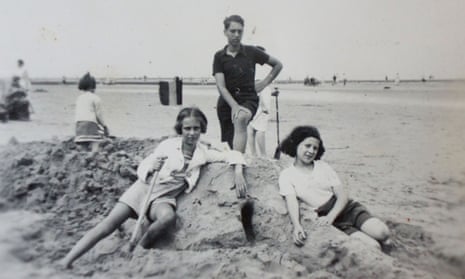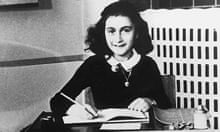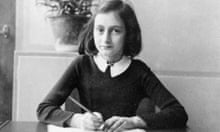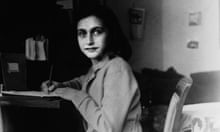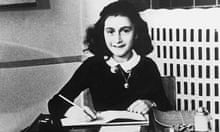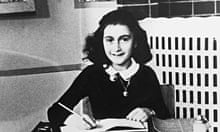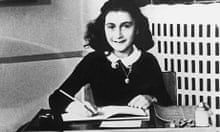It was to be Eva’s last conversation with her brother, Heinz. They were human cargo on the railway cattle wagon transporting their parents and a hundred other people, all Jews and Gypsies, to Auschwitz-Birkenau in May 1944. On their three-day descent into hell, Heinz told her that secreted under the floorboards of the attic where he and their father had been hiding were 30 of his paintings.
The family avoided initial selection for the gas chambers on arrival at the death camp – captured on her 15th birthday, Eva was the youngest in her trainload of prisoners to escape the fate of most children at Auschwitz. Her brother gave her a desperate hug as the men were separated from the women, and they parted forever. Heinz, the Red Cross informed her later, had died of exhaustion after a forced march from Poland to Mauthausen in Austria in April 1945. Her father, Erich, died just three days before the war ended. After returning to Amsterdam in 1945, she retrieved the cache of art, hidden with some 200 of his poems. It became Eva’s only reminder of her brother.
Now the siblings’ remarkable story, and Heinz’s creativity, has become the subject of an exhibition put together by the South African Holocaust & Genocide Foundation, which will be on display at the Jewish Museum in London to mark Holocaust Memorial Day on 27 January. Eva will also give a talk recounting the tale of her survival.
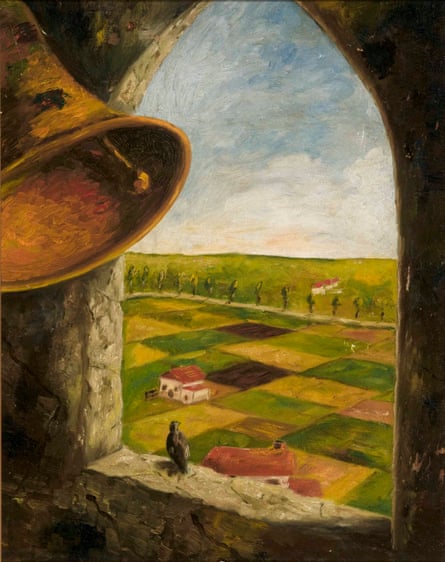
Eva Schloss’s (nee Geiringer) story began in 1929, born to a thoroughly assimilated and cultured middle-class Jewish family in Vienna. By 1938, when German troops marched into Austria to cheering crowds waving Nazi flags, life had become increasingly grim for Jewish Austrians. As borders closed to refugees around Europe, the family hurriedly made plans to flee. Erich found work in the Netherlands and Heinz was sent on ahead, travelling alone aged 13 after being badly beaten up at school, with Eva and her mother, Fritzi, following once they had sold what possessions they could. The family was reunited in Amsterdam in February 1940 and something like normal life resumed. “The Dutch were very welcoming. I thought life was going to be OK,” says Eva, who now lives in London.
Here she got to know Anne Frank, whose father Fritzi would marry in 1953. “Anne was much more mature and grown-up than me,” Eva says. “She attended the Montessori school and was an academic year ahead of me. I went to an ordinary local school.”
Heinz began composing on the piano, learned the accordion and started a jazz band. “He had a perfect ear,” says Eva, who was far less studious, preferring to play rounders and cycle with other children outside their flat in Merwedeplein. “I was not at all intellectual. I didn’t like reading and he read all the time. At night, he told me everything he had read.” But in May 1940, the Germans invaded and soon imposed the yellow star and ever-tighter restrictions on Jews. In 1942, after Heinz and Anne’s sister, Margot, got a call-up notice to be deported to Germany – and with no way out of the country – the Geiringers and the Franks went into hiding. “We moved around about six or seven times. At first we stayed with a family but after only a week their two little boys told everyone at school that their aunt and cousin were staying but they’d never heard of them and didn’t believe it. So the parents told us we had to go.”
As Eva and her mother, both blonde, could pass for being Dutch, they took the chance every couple of months to visit her father and brother, who, with no false identity papers, were unable to leave the attic. As their worlds shrank to a few rooms, seeing only a parent on most days, the siblings’ already close relationship became intense – the only teenagers in each other’s lives.
Like Anne Frank in her secret annexe, the father and son looked for a creative escape while in hiding. Both painted and wrote poetry, with Heinz also teaching himself six languages and composing music. “They were very sombre,” Eva says of his poems. “He realised life was precarious.”
The paintings were done on what was to hand – faint stripes can be seen on tea towels used for some. Some are sunny, bucolic landscapes, as if glimpsed from a window. “It was all fantasy,” Eva says of his subjects. In one, a couple play tennis; in another, a sailing boat glides along an azure sea. The most pitiful shows a teenage boy slumped over a desk in a dark room, with light streaming through a tantalising open door.
By May 1944, the Geiringers had evaded capture for two years, with Eva and her mother avoiding almost weekly searches by crouching in a tiny cavity behind a false wall. Then the woman hiding Erich and Heinz began to blackmail them for more money. A Dutch nurse offered another refuge but she was a double agent – betraying 200 people, including her own fiance, Eva learned from the nurse’s trial after the war. The Gestapo came for them the next day. Eva and Fritzi had visited them and were caught, too.
The family awaited their fate in the Westerbork deportation camp, hopeful to the last that they could remain there, but after only days they were herded on to the dreaded train east.

Eva was saved from being sent straight to Auschwitz-Birkenau after her mother insisted she wore an overcoat and frumpy hat that made her look older than 15. She had many other narrow escapes, including being saved from typhus thanks to the intervention of a cousin, Minni, whose nursing experience had made her useful to the Nazis. She was also able to give Eva and her mother extra food. Mother and daughter were lucky to be sent to work in the block where murdered inmates’ possessions were searched for valuables. It was known as “Canada” as it seemed a land of plenty.
Minni even saved Fritzi from the gas chamber, getting her name taken off the list when she went before “Dr Death”, Josef Mengele. Then Eva’s mother escaped selection a third time. “I survived through hope,” says Eva. “Hope keeps us going.”
The emaciated Eva and Fritzi were nursed back to health by their Russian liberators, making their way back to the Netherlands via Odessa, Istanbul and Marseille. As the Holocaust survivors tried to rebuild their lives in Amsterdam, Otto Frank, who had also been in Auschwitz, visited them. He was the only survivor from his family – Anne and her sister, Margot, had died of typhoid in Bergen-Belsen.
“He was very lonely,” said Eva. “When he mentioned the diary – he said he felt like his little girl was still with him – I remembered the paintings. In Auschwitz, I had forgotten.
“They were under the floorboards with a note that they belonged to Heinz Geiringer and after the war he would pick them up.”
Eva admits struggling for years to readjust after the war, returning at 16 but with childhood already distant. “I didn’t play; I wasn’t interested in sport or anything. But I was a good pupil,” she says. “I became very, very depressed. I have a note saying: ‘I want to commit suicide, life is not worth living’ after having survived. There was no counselling then. You had to try to cope with it by yourself.”
The family connection with Anne Frank was also difficult for the teenaged Eva. But just as her posthumous stepsister has lived on in her diary, so Eva hopes that the art made by her brother can be a memorial to him. “I donated these paintings to the Resistance Museum in Amsterdam so people could see his work and know about him,” she says.
Eva admits to mixed feelings about retrieving the paintings in 1945. “We didn’t really want to go to the house,” she says, “as we would have to return to the woman who had blackmailed my father and Heinz. We were scared to confront her. But, of course, we did want to retrieve the paintings. I had not known that Heinz had made so many and such meaningful and artistic paintings. My mother and I both stood over them and cried.”
There is a special exhibition on Eva’s early life and Heinz’s artwork at the Jewish Museum in London on 28-29 January, jewishmuseum.org.uk. Eva will give a witness testimony talk on Sunday, 29 January to mark Holocaust Memorial Day
The National Holocaust Centre & Museum, in Laxton, Nottinghamshire, is inviting applications from institutions that would like to host the exhibition. Contact janet.mills@nationalholocaustcentre.net
